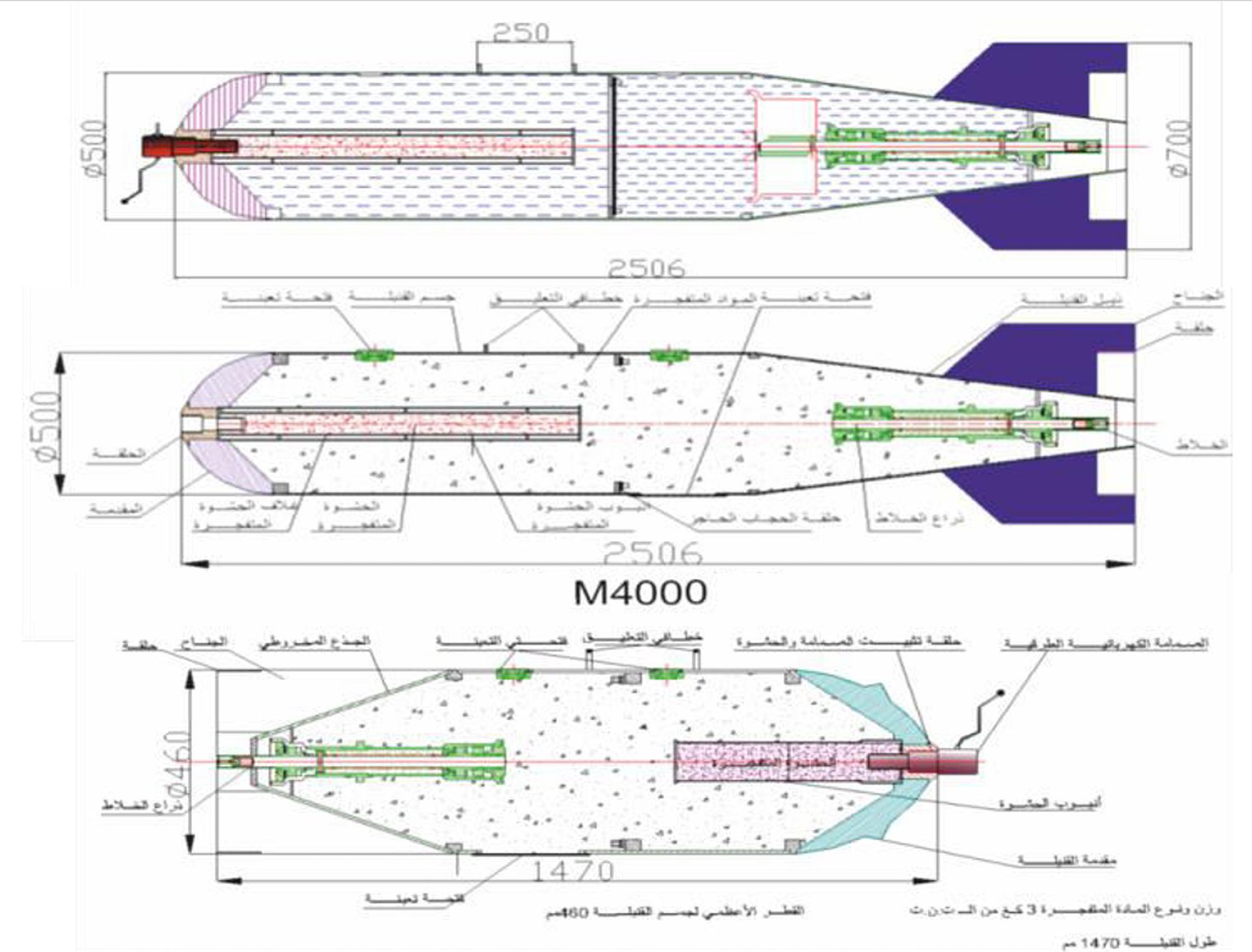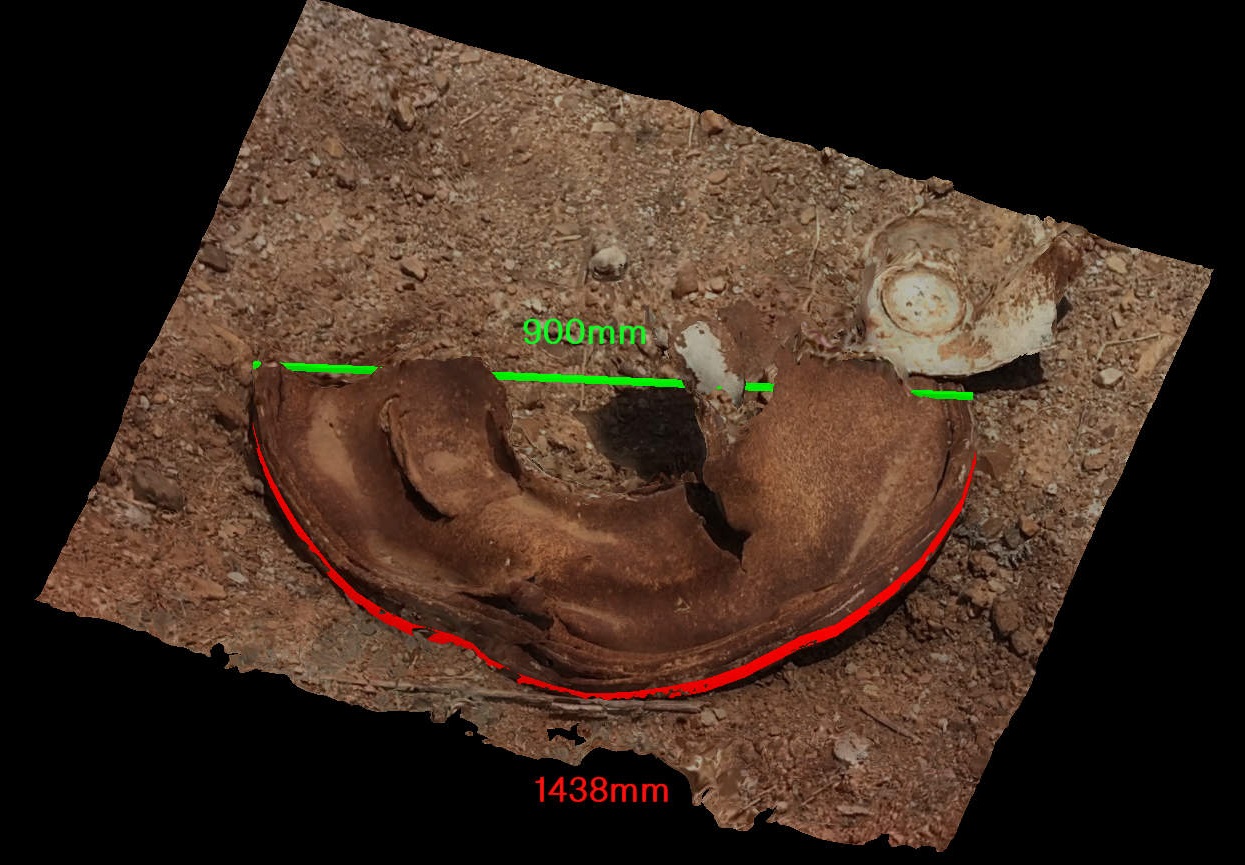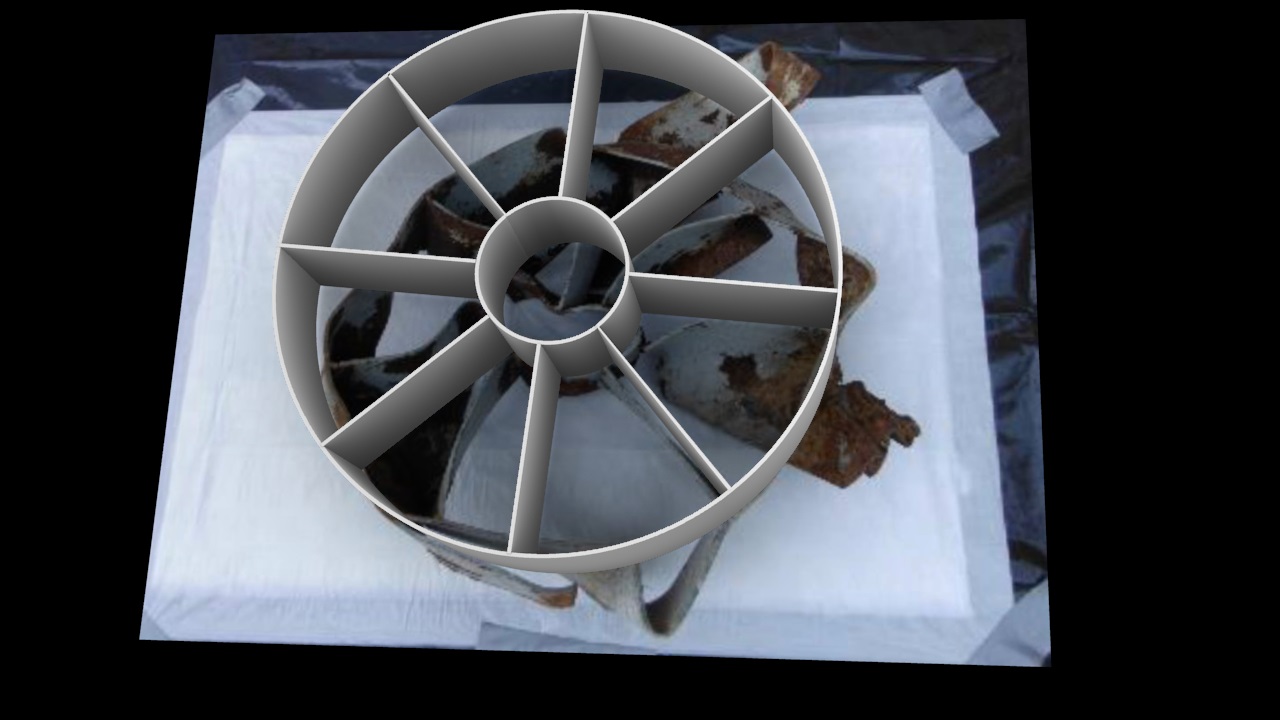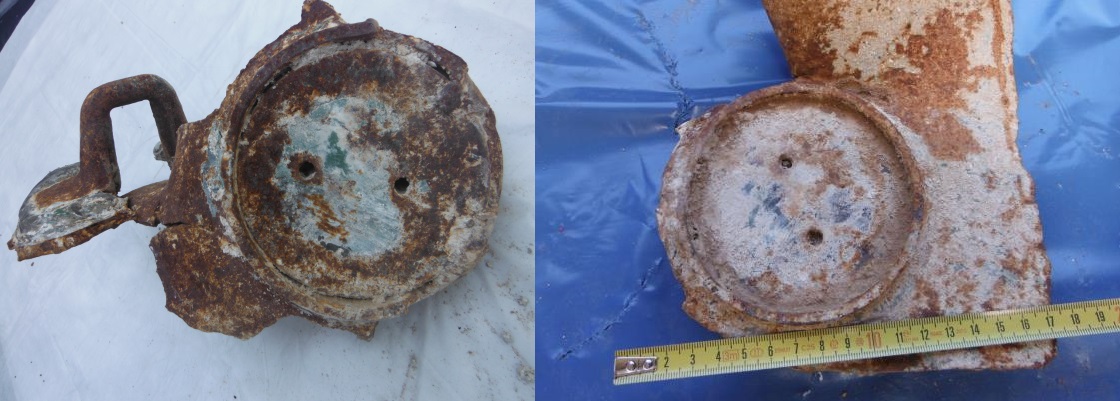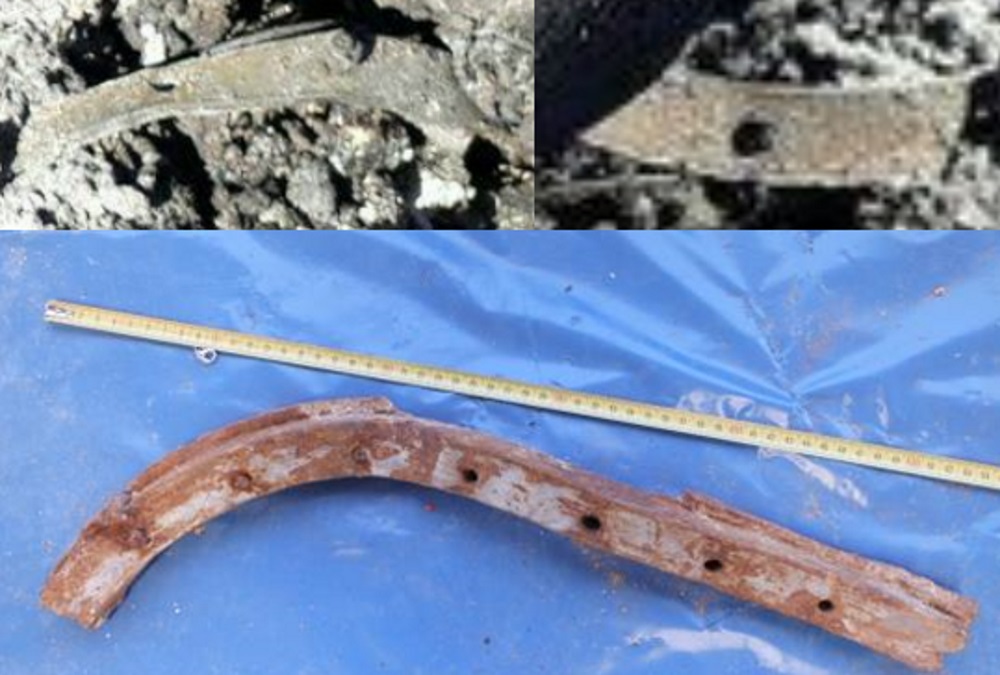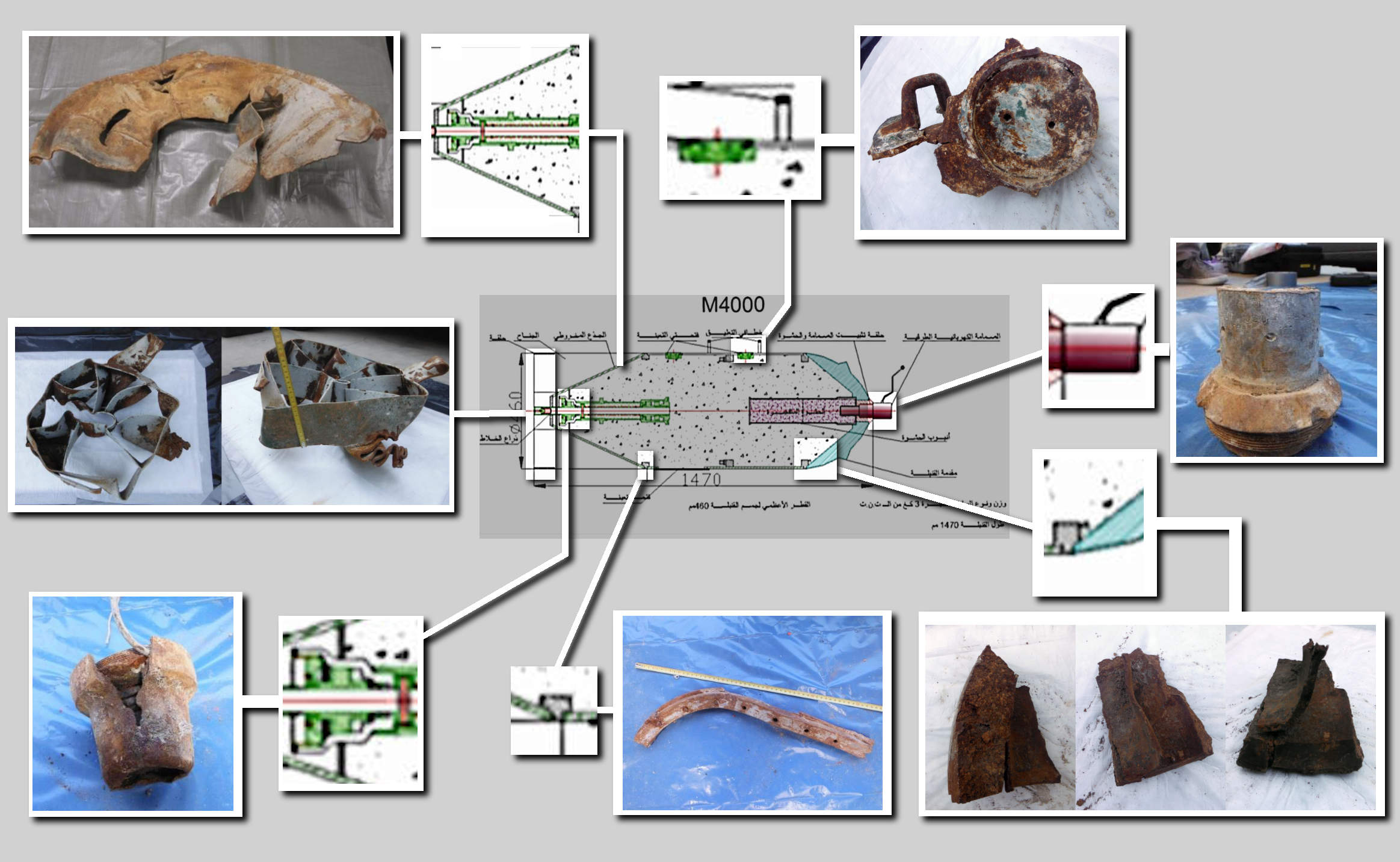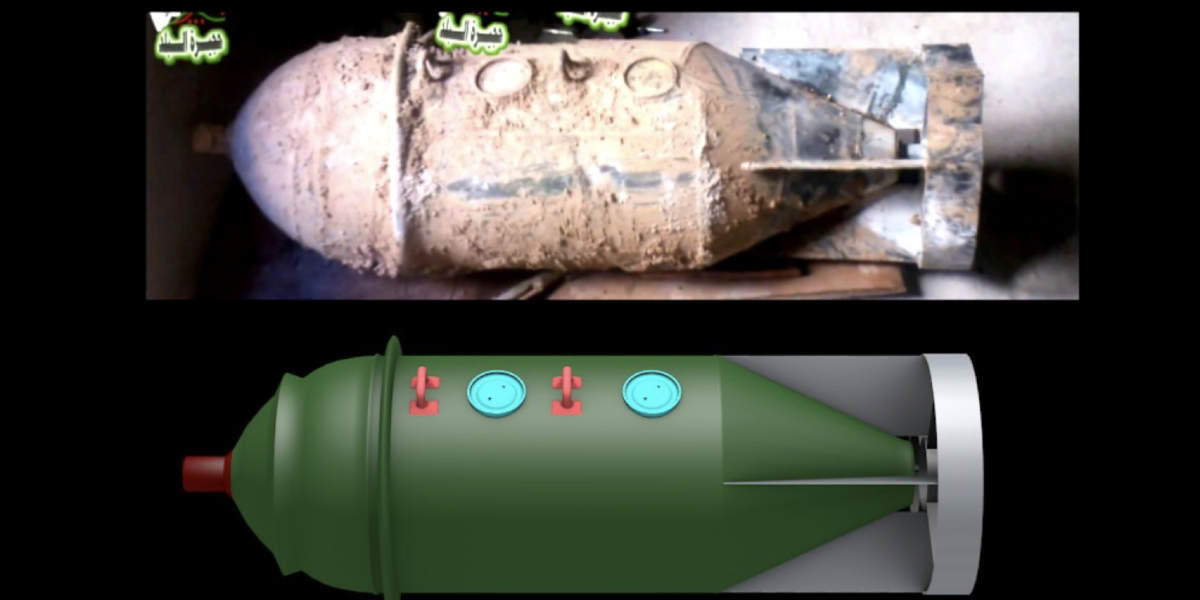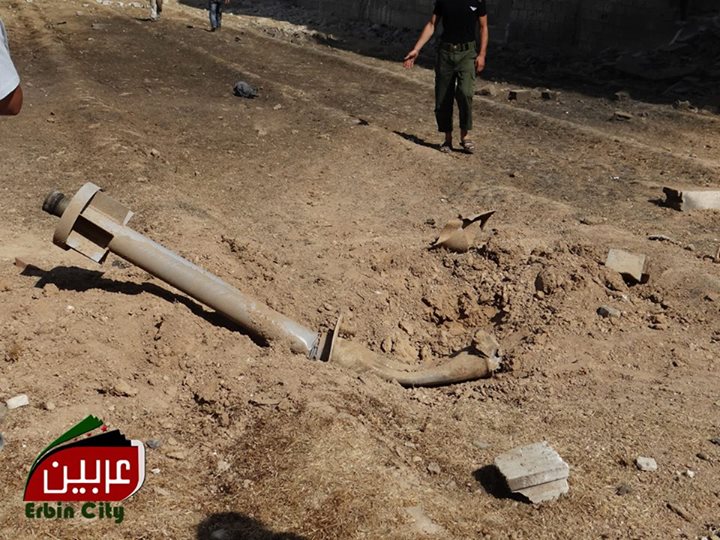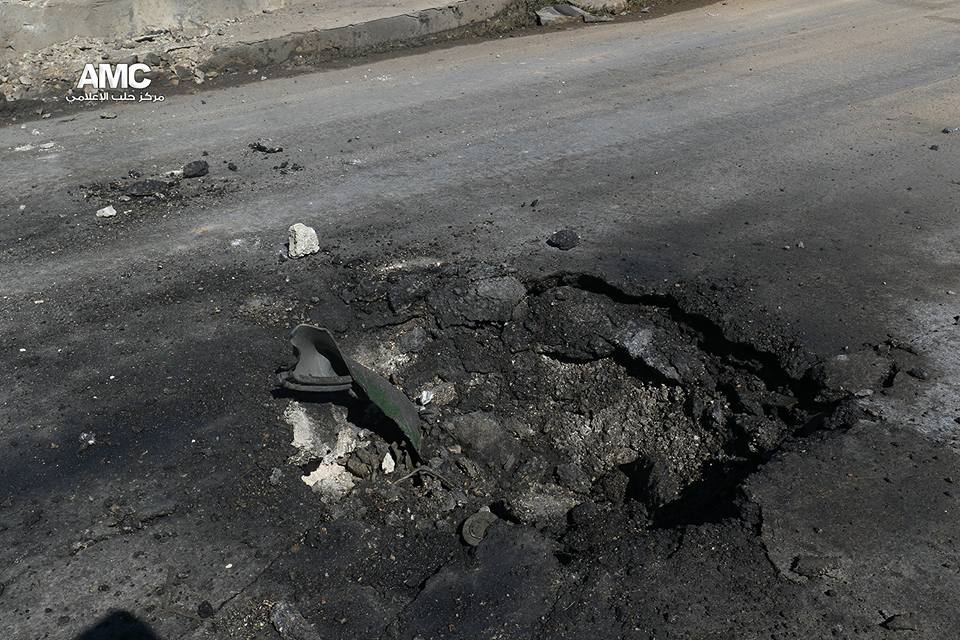Did Russia Accidentally Provide the Best Evidence of the Syrian Government's Involvement in Sarin Attacks?
Russia’s latest attempts to challenge accusations of Syrian government responsibility for the April 4th 2017 Sarin attack on Khan Sheikhoun may have inadvertently produced the best evidence yet that the Syrian government is responsible for not only the Khan Sheikhoun attack, but the earlier March 30th 2017 Sarin attack on Al-Lataminah.
During a lengthy press conference on November 2nd 2017, the Russian Foreign Ministry, Ministry of Defence and the Ministry for Industry and Trade presented its response to the Organisation for the Prohibition of Chemical Weapons – UN Joint Mission (OPCW-UN JIM) report on the Khan Sheikhoun Sarin attack. The presentation included a series of slides, which included diagrams of two types of chemical bombs, designated the MYM6000 and M4000. The slides from the presentation, with a clearer version of the bomb diagrams, were published online:
Remarkably, the Russian presentation appears to be the first-time images of these munitions have been made public, and before the press conference, no other references to MYM6000 or M4000 bombs appear online. Gregory Koblentz, Associate Professor and Director of Biodefense Graduate Program in the Schar School of Policy and Government at George Mason University, noted that “these designations match bombs declared by Syria to the OPCW”, although there appears to be no open source material that provides specifics about the types of bombs declared to the OPCW. In the press conference the source of the diagrams are described as being provided “by certain organisations”, but no more specifics are given.
In the recent report by the OPCW Fact Finding Mission (FFM) on the March 30th Al-Lataminah attack photographs of a number of items recovered from the attack site by the Syrian Civil Defence and provided to the OPCW were featured. This includes two metal filling caps that are identical in design to a filling cap recovered from the site of the April 4th attack in Khan Sheikhoun:
Chemical analysis of the debris and samples recovered from the March 30th attack site are consistent with the same type of Sarin being used in both incidents, Sarin which the OPCW-UN JIM report on the Khan Sheikhoun attack states is linked to the production process used by the Syrian government. While the OPCW provides evidence that links the Sarin used in both attack (as well as previous attacks) to the Syrian government, it is the Russian government, who in their attempt to defend the Syrian government, inadvertently provides evidence linking the bomb used to the Syrian government.
The diagram published by the Russian government of the M4000 munition provides multiple matches to the debris recovered from the Al-Lataminah attack, linked to the munition used in the Khan Sheikhoun attack by the presence of the same filler cap. First, it is possible to establish the size of the munition remains are consistent with the size of the M4000 munition. In the OPCW-FFM report on Al-Lataminah the remains of the tail section of the munition, with one tail fin still attached, is measured as 900mm wide. Based on this it is possible to calculate the approximate circumference of the munition. The below image shows this process in Blender:
Based on the above measurements the diameter of the munition is approximately 458mm, and considering the level of distortion to the remains of the munition this is consistent with the 460mm diameter of the M4000 chemical bomb. It is also possible to get an approximate measurement for the tail fins thanks to the following image in the OPCW-FFM report on Al-Lataminah:

“01SDS(B) is a large corroded and deformed metal object. Despite the corrosion, it is still possible to see layers of dark green and grey colour. It is also possible to see a smaller inner ring in the middle, linked by seven metal parts to a larger, outer ring. Four of the parts that are linking rings are rectangular. The other three are much larger and triangular. The spacing between the three parts, in addition to indications on the rings, point to one missing larger triangular part.
This is consistent with an aerial bomb tail fin assembly.
The FFM took numerous measurements of this item. Given the level of deformation, these measurements are only approximate dimensions. These approximate dimensions have not been included.”
Based on the visible measurement, it was possible to recreate a 3D model of the tail ring, which again measured to approximately 460mm:
These measurements are consistent with claims made by experts consulted by the OPCW-UN JIM in their report on the Khan Sheikhoun Sarin attack:
“Examining the munition remnants observed inside the crater, the forensic institutes and individual experts concluded that the remnants were pieces of a thin-walled munition of 300 to 500 mm in diameter and were likely from an aerial bomb.”
The design of the tail section and tail rings are also consistent with the diagram of the M4000 bomb, showing the tail fins do not extend beyond the sides of the tail ring, and the tail section does not extend fully into the tail rings, as it does on some other models of bombs, including the MYM6000.
Also recovered from the impact site of the Al-Lataminah attack were the aforementioned identical filling caps, matching the type recovered from the Khan Sheikhoun attack. In the OPCW-UN JIM report on Khan Sheikhoun the cap recovered was described as “uniquely consistent with Syrian chemical aerial bombs”:
One cap has a piece of metal attached to it which itself is attached to a suspension lug, used to attach the munition to an aircraft. Two caps are also visible on the side of the munition in the M4000 diagram, one of which is positioned close to a suspension lug:
Visible on the front of the bomb in the above diagram is the fuze and fuze housing. The fuze housing, which is separate from the blue coloured front end of the munition, extends over the front edge of the munition, and this would be consistent with debris recovered from the Al-Lataminah attack site:
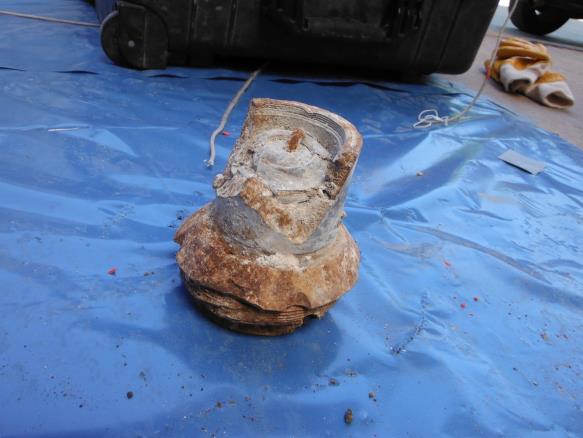
“09SDS is a heavily deformed and damaged metal object. On the both sides threads are visible. This part also bears visible markings which point to a universal bomb fuse. The fuse has been activated and does not contain explosive material. This device is normally electrically armed, heat resistant, and can function as point detonating or with delayed action. It is used on a large number of aerial bomb types by numerous nations.”
The thread indicates the fuze housing would have been screwed into the front of bomb, consistent with the diagram of the M4000 chemical bomb. The fuze detonates a 3kg charge that runs through the front half of the munition, marked in red.
Also recovered from the Al-Lataminah attack site is the remains of a heavy metal object that is consistent with the thicker front end of the bomb marked in blue in the above diagram:
The OPCW-FFM report describes this object, including the following sentence:
“One side of the item is flat with only the bottom part bearing marks of violent splitting. Sides of the larger object are uneven and rough, probably the result of violent separation as well.”
Its position around the fuze and bursting charge would be consistent with the damage seen on the object, and it is the only object with these heavier dimensions recovered from the attack site.
Another type of object recovered from both the Al-Lataminah and Khan Sheikhoun attack sites are metal rails with equally distributed holes:
The rail recovered from Al-Lataminah is approximately 550mm long, with broken bolts inside some of the holes, and a 5mm metal layer attached, the thickness of which is consistent with other metal layer debris recovered from the impact site. It is likely this was used to attached parts of the bomb together, and it seems certain to be one the objects marked in grey in the below diagram:
One of the most interesting items is in the rear of the bomb, marked as a “mixing arm”. Part of this, found in the very rear of the bomb, was recovered from the scene of the attack:
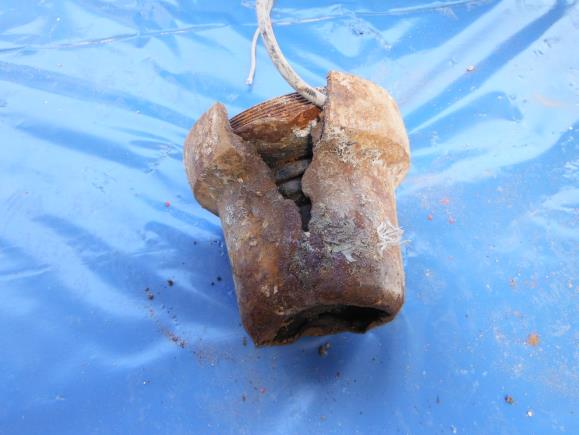
This is described in the OPCW-FFM report:
“The lid part has a larger hole in the middle where a segment of a protruding metal rod (labelled 3) is visible. The metal rod is broken and deformed.”
This, again, appears consistent with what is visible in the diagram of the M4000 bomb.
Due to the total lack of public documentation about these munitions prior to November 2nd, the Russian government’s presentation on Khan Sheikhoun has made it possible to make these matches, further providing information about the Syrian government’s role not only in the Khan Sheikhoun Sarin attack but also in the Al-Lataminah Sarin attack.
The only way for the Russian or Syrian governments to now deny the M4000 bomb was used is to produce detailed photographs of the M4000 bomb, showing the same parts indicated above, or, if the Syrians still claim all these bombs were destroyed after 2013, declassify and publish further information about the bomb.
